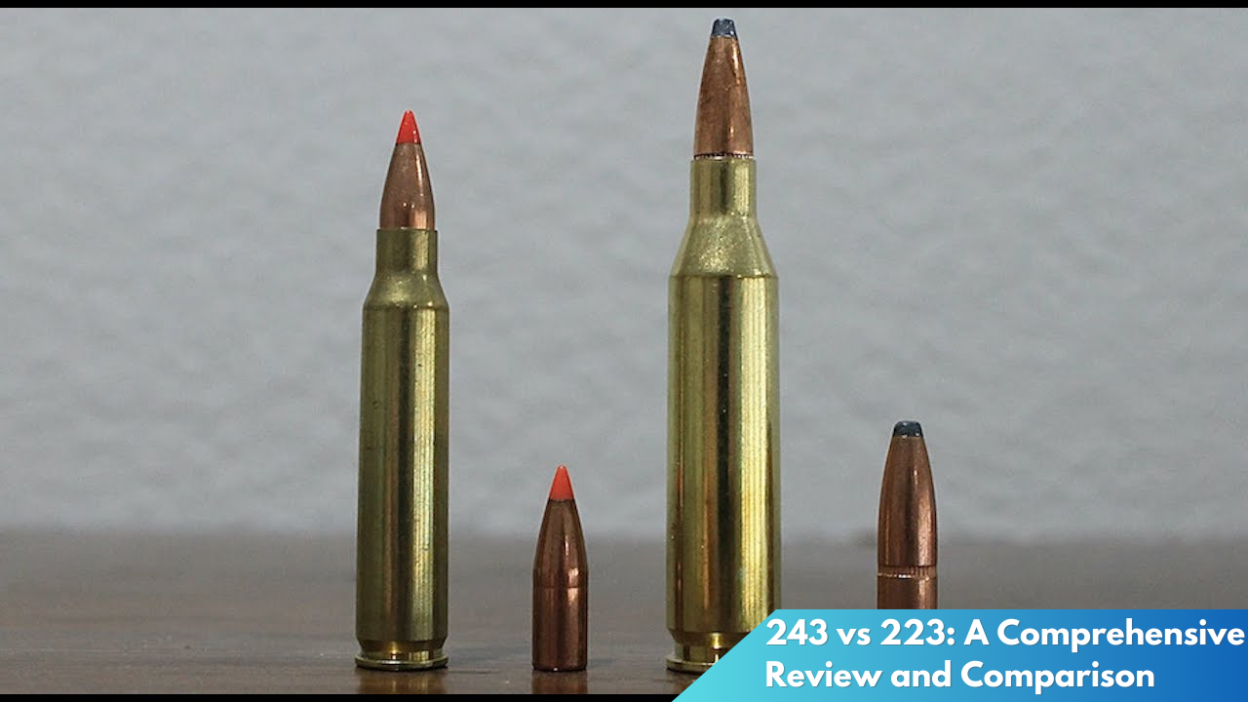In the world of firearms and ammunition, selecting the right caliber is crucial for achieving optimal performance and meeting specific needs. Among the various options available, the .243 and .223 calibers often emerge as popular choices for hunters, target shooters, and gun enthusiasts alike. This article delves into a detailed comparison between these two cartridges, examining their key differences, performance in the field, and helping you decide which fits your particular requirements best.
Key Differences Between .243 and .223 Ammunition
The .243 Winchester and .223 Remington cartridges are both highly regarded in the shooting community, yet they cater to slightly different applications. The .243 is generally recognized as a versatile round, suitable for medium to large game hunting. With a bullet diameter of 6mm, it offers higher kinetic energy and a flatter trajectory compared to the .223, making it more effective for longer-range shots. In contrast, the .223 caliber, with its 5.56mm bullet diameter, is predominantly used for small game hunting and target shooting due to its lighter recoil and higher velocity.
A significant distinction between the two lies in their ballistic properties. The .243’s larger case capacity allows it to house more gunpowder, which translates into greater muzzle energy. This characteristic enhances its penetration power, making it suitable for larger game animals such as deer. Meanwhile, the .223 is celebrated for its high-speed performance and precision, characteristics that are particularly advantageous in scenarios requiring rapid follow-up shots or when engaging smaller targets like varmints.
Another key difference is in cost and availability. Generally, the .223 ammo is more affordable and widely available, appealing to those who frequently spend time at the range or require bulk quantities for extensive practice sessions. On the other hand, the .243, due to its greater stopping power, often comes at a higher price point and may be less accessible in certain regions, making it crucial for users to weigh their options based on budget and availability.
Performance Analysis: .243 vs .223 in the Field
When evaluating performance in the field, the .243 Winchester stands out for its adaptability in various hunting environments. Its effective range extends beyond 300 yards with relative ease, maintaining accuracy and impact energy for medium to large game. This makes it a favorite among hunters in open fields or mountainous terrains where shots at extended distances are common. Furthermore, the .243’s ability to handle heavier bullet weights adds to its versatility, ensuring humane kills with adequate knockdown power across a range of game sizes.
In contrast, the .223 Remington is celebrated for its impressive accuracy and speed, making it a staple for target shooting and varmint hunting. Its lighter recoil allows shooters to maintain better follow-through and quicker target acquisition, a vital characteristic during competitions or when dealing with fast-moving small game. While the .223’s effective range is typically shorter than the .243, it excels in environments where precision and quick shooting are paramount, such as dense forests or varmint-rich areas.
Despite their differing specializations, both cartridges have proven reliable and effective in the right contexts. The choice between .243 and .223 often boils down to the shooter’s specific needs and the environment in which they’ll be operating. Whether the priority is long-range power or quick, precise shots, understanding each caliber’s field performance can significantly guide the decision-making process.
Choosing the Right Caliber: .243 or .223 for Your Needs
Selecting between the .243 and .223 calibers largely depends on the intended use and personal preferences. For hunters focusing on medium to large game, the .243 Winchester is typically the superior choice due to its powerful ballistic performance and ability to deliver clean, ethical kills at extended ranges. Its versatility further allows it to be effective across various terrains, making it an excellent all-around option for those who pursue diverse hunting activities.
Conversely, for those primarily engaged in target shooting or hunting smaller game, the .223 Remington offers an appealing combination of affordability, reduced recoil, and accuracy. It’s a favorite for competitive shooters and those who frequently practice at the range, providing cost-effective shooting sessions without compromising on performance. Additionally, the .223’s lighter recoil suits novice shooters or those who prefer a more comfortable shooting experience.
Ultimately, personal preference, budget, and specific shooting goals should guide the choice between these two calibers. Both cartridges have their distinct place in the shooting world, and understanding their respective strengths ensures that shooters can make informed decisions to enhance their shooting experiences and meet their unique needs.
In conclusion, whether to opt for the .243 Winchester or the .223 Remington is a decision that should be informed by your specific requirements and intended applications. Both calibers have their distinct advantages and have earned their places in the arsenals of shooters worldwide. By considering factors such as range, target size, and personal comfort, you can ensure that your choice of caliber will meet your expectations and enhance your shooting endeavors.



